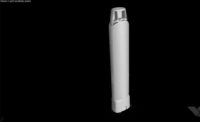NDT Automation
A glimpse at how automation is transforming NDT.

By having processes automated, it allows for companies to really focus on their customers and continuously create value for them.
In the previous article, we touched upon NDT 4.0 and provided a glimpse into what it is and how it is transforming industries around the globe. Now we will dive into a segment of NDT 4.0, automation, and look at some examples that highlight how it is changing companies for the better.
Why Automation in NDT?
NDT plays a vital role in our everyday lives, something we never notice or think about. The buildings that you walk into everyday to work to the cars you drive and the planes that you fly all require some form of automated NDT. Automated NDT is essential for constructing, maintaining and evaluating the safety of all these components across so many kinds of industries. Automation ultimately provides an increase in accuracy, precision and speed while reducing speed of inspection. This makes up for any human errors that may occur and increases safety as well.
Lean Automation
With the increased speed automation brings, companies in industries that require inspection of every part can use lean automation, a process that makes the inspection process as efficient as it can be, increase capabilities and ultimately increase values to the customer.
Lean automation has two core principles:
1. Make obvious what adds value by reducing everything else
2. Improve the flow of work

With the increased speed automation brings, companies in industries that require inspection of every part can use lean automation, a process that makes the inspection process as efficient as it can be, increase capabilities and ultimately increase values to the customer.
The goals of lean automation are:
1. Pull processing – A strategy to start work only when there is a customer demand for it, reducing waste during the process
2. Perfect first-time quality – A metric that indicates which parts are manufactured correctly the first time without the need for inspection, rework, or replacement.
3. Continuous improvement – Automation allows for processes to self-improve over time
4. Flexibility – Automation allows for complete flexibility over the manufacturing process
5. Long Term supplier relationships – With increased speed and high-quality inspection that lean automation brings, companies can ship out more parts, thus increasing business with the supplier and improve relationships.
6. Load levelling and production flow – This refers to the balanced throughput rates of activities within a process and reduces physical inventories to improve cash flow and ultimately costs.

By implementing lean automation, companies can achieve 100% NDT inspections into critical processes and rejected parts can be offloaded at the point of failure rather than down the line. This enables companies to identify where in the process the process failed and correct it quickly. This is great for companies that require high volume of parts to be inspected and any slowdown can impact the company’s cost.
By having processes automated, it allows for companies to really focus on their customers and continuously create value for them. This is especially important in NDT. There are many kinds of NDT methods today such as thermography, ultrasonic testing, X-ray and more that have been around for many years. These processes are ultimately enhanced through automation.
Automation NDT Examples
One example can be seen in a paper about automated ultrasonic inspection and how it improves quality and benefits economy in welding workshops. Companies greatly benefit from automated processes and they can achieve increased quality of inspection or probability of detection, increased employee work satisfaction, increased efficiency and inspection speed and much more. A specific example in the paper looks at the economical benefits for wind turbine tower manufacturers that shifted from MUT (manual ultrasonic testing) to AUT (automated ultrasonic testing). The manufacturer was able to lower the number of scans from 6 to 1 per weld and the time of each scan from 120 minutes to 8 minutes. This allowed the manufacturer to reduce the inspection hours per week from 270 hours to 18 hours, and ultimately save an estimated cost of 500,000 Euros over the course of 18 weeks.
Another example can be seen in the automotive industry as well. Modular automation systems at Bosch Rexroth, a automotive seat manufacturer, allows them to design a high-volume, automated assembly line that saves factory floor space, lower cycle times, and improve quality. With automated stations that provided flexibility, they were able to save 30% of the floor space originally planned. In addition to automation, the company was also able to provide optimal ergonomic conditions for their employees, increasing employee satisfaction and increased output.

A third and final example can be seen in the aerospace industry. A engine manufacturer, VINCI Energies, along with Actemium NDT, developed a new automated NDT solution to inspect its engine structural parts. Here, they had two robots work together to inspect the part at two stages of the manufacturing process, before and after machining. Ultimately, the entire cycle is automated, and the images are digitally transferred to the operator for approval. This grants the operator to spend more time analyzing information instead of having to do various tasks that otherwise can be automated. In the end, it is not just about the enhanced repeatability and speed automation brings but the added value over time to achieve higher quality parts.
Automated Inspection in NDT
As technology advances and competition grows fiercer, automating NDT processes is even more crucial for businesses. NDT inspection services will reach a market of $10.2 billion next year up from $8.1 billion in 2015, showing just how important this industry is.
The most important part of NDT 4.0 is the automated inspection of the part being analyzed. An automated inspection system enhances inspection and provides a consistent overview of the production line and helps identify and classify defects for future reference. Not only does this help with flexibility of the process, but automation allows workflow to run 24/7 while maintaining a much higher inspection speed than human inspectors. Cameras attached to the vision system captures images and sends them back to the computer for processing. Nowadays, the vision processing algorithms are really what make a company shine. With the help of AI, software is becoming more powerful and is increasing its ability to detect not only defects in a part, but the right defects at a much faster rate. Stay tuned for the next article, NDT AI and software.
Looking for a reprint of this article?
From high-res PDFs to custom plaques, order your copy today!





